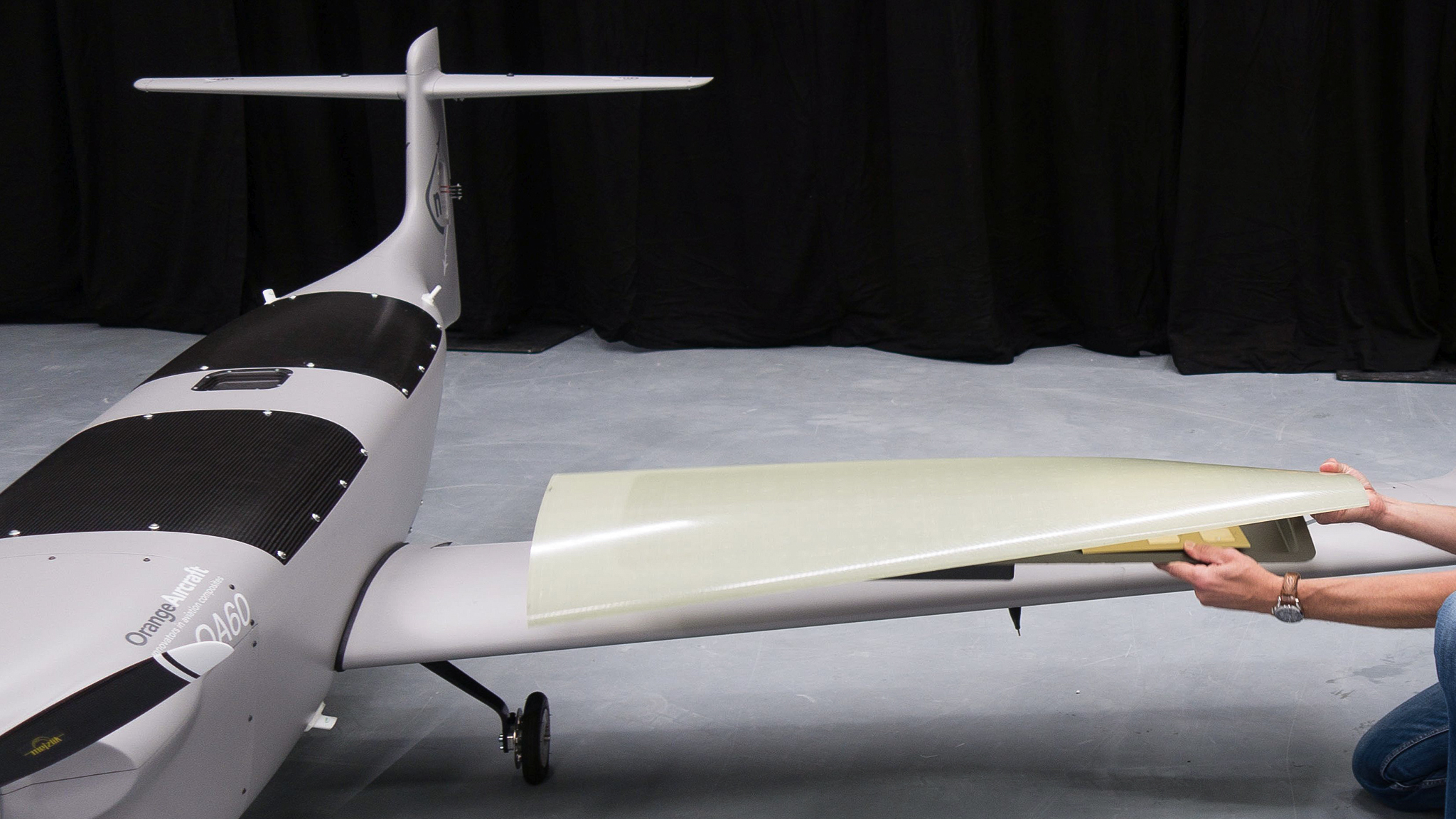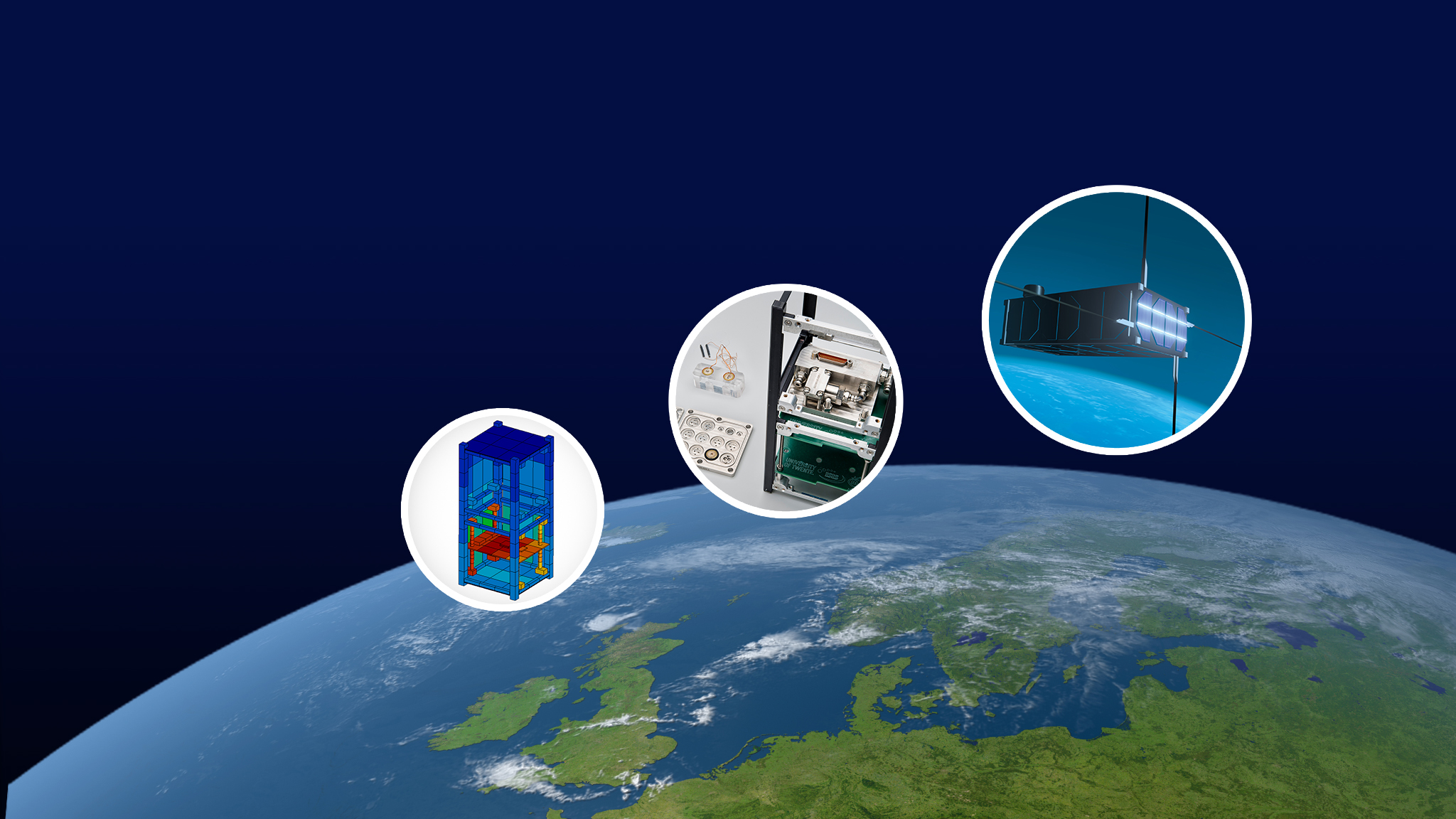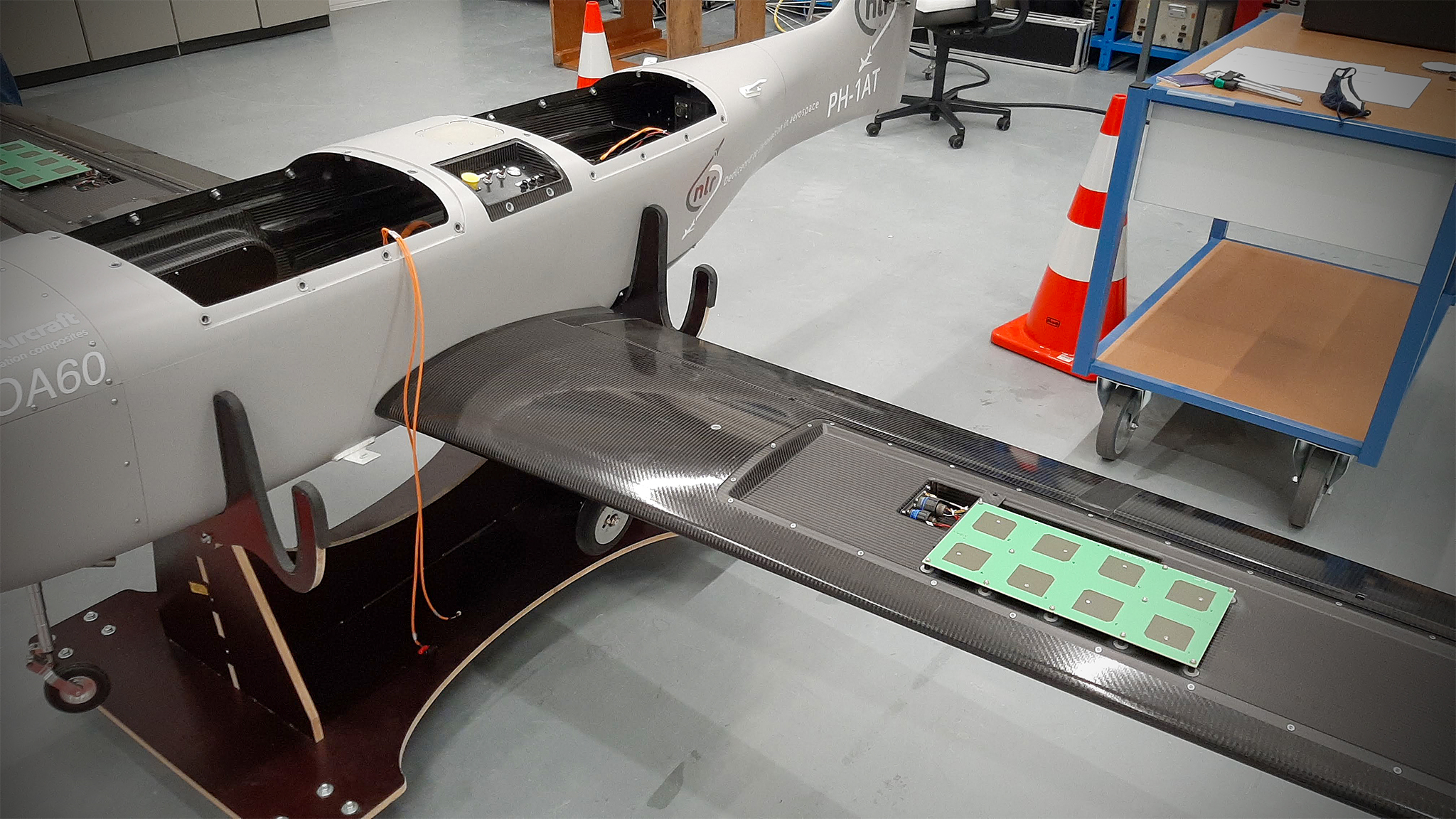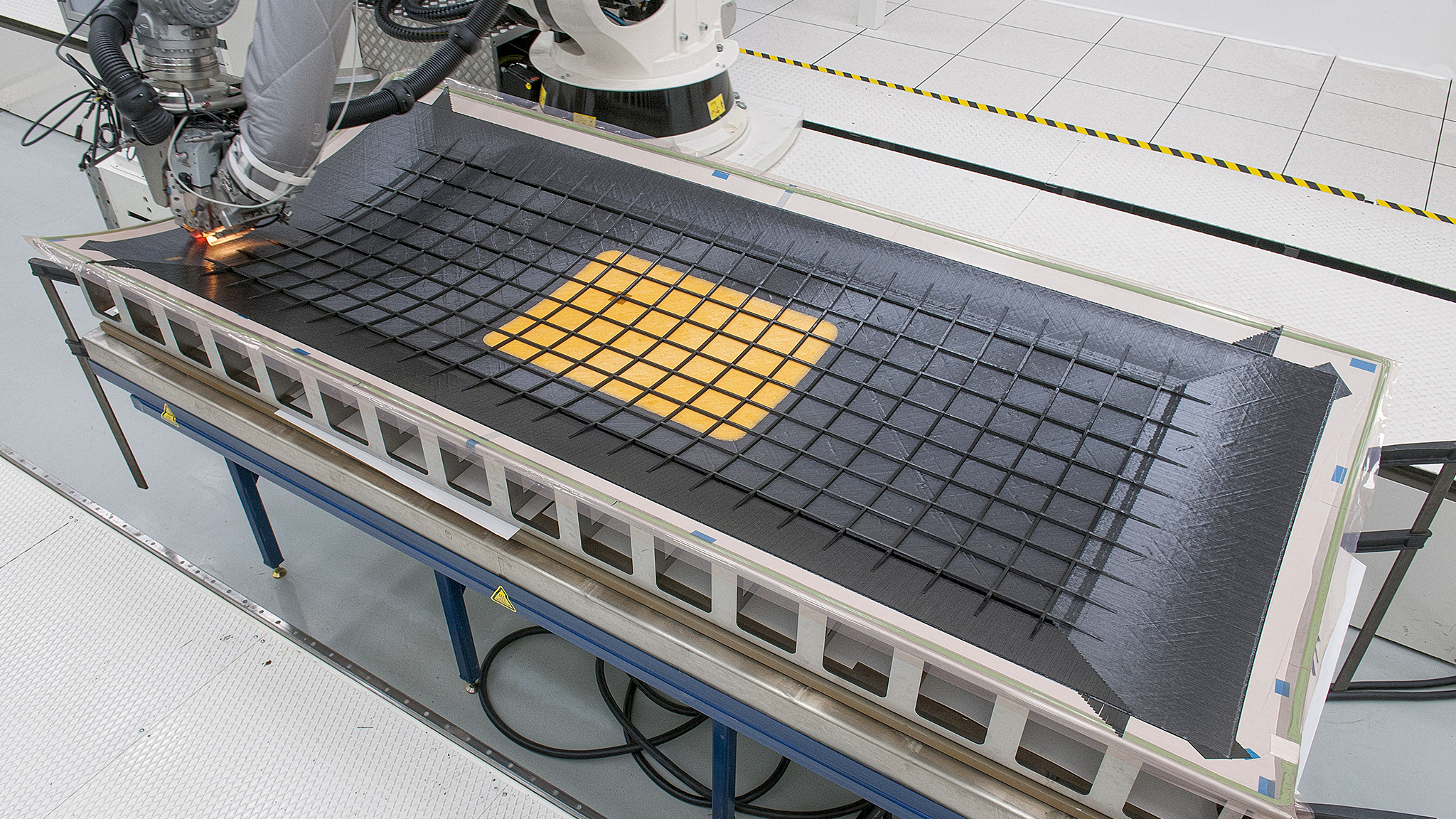NLR specializes in developing phased-array antennas, their individual antenna elements and the beam former that controls the array. For various aerospace applications, NLR develops the antennas or the antenna system and the system architecture. “In addition, we have drawn up requirements for the antenna,” says Jaco Verpoorte, a senior engineer at Royal NLR. “For the technology in specific applications such as satellites and aircraft, and for the environment that the system is used in. In these jobs, NLR looks at aspects such as environmental factors like the vibrations, pressure and temperature levels that a satellite or aircraft has to cope with, as well as the propagation of signals – how they progress and move. Atmospheric damping or reflection by buildings can then occur. NLR can run through the entire process, from design to field testing and qualification – and that’s pretty unique!”
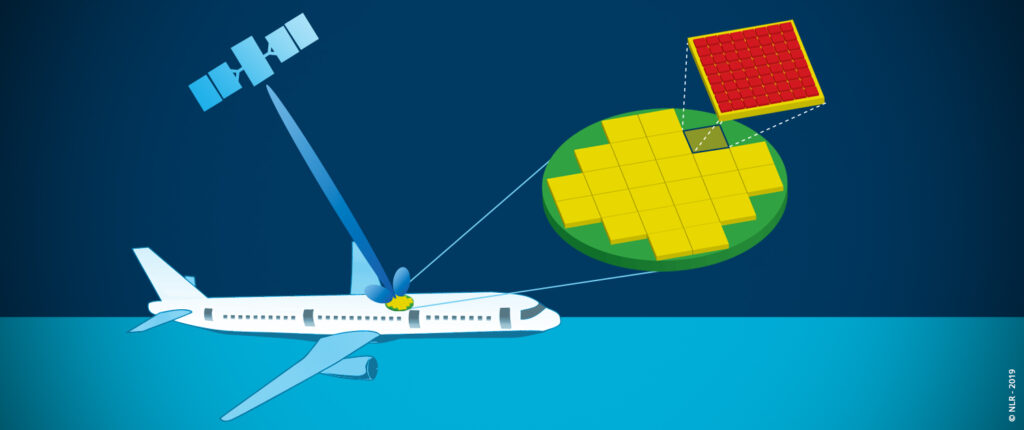
Developments
The most important application of beam forming is the aviation market, but it also plays an important role for ground stations that have to follow satellites. Electronic control is also going to play an important role in constellations of satellites that communicate with each other: intersatellite links.
Internet signals are currently sent via the transmission masts for mobile communications, but with the advent of constellations of satellites in which beam forming may play an important role, everyone will be given direct access to the Internet from anywhere in the world. Even at the least accessible places on Earth. NLR carries out multidisciplinary research in a variety of cooperative groups. Examples include:
Optical beam forming
The beam former used for transmitting the signal can be controlled with RF electronics or alternatively using optical chips: the Optical Beam Forming Network (OBFN). In the field of optics, using beam forming is innovative and efficient because a large amount of processing can be done with a small chip. To do this, NLR is working with Lionix International, a supplier and designer of customized optical microsystem solutions. Using optical components will ensure that beam forming will be cheaper and less complex in the future.
For the European SANDRA project, working with a number of partners, NLR developed a Ku-band antenna with optical beam forming: an antenna on an aeroplane that communicates with a satellite to improve the communications from on board an aircraft. The follow-up – integrating the antenna into the fuselage of an aircraft – will be tackled in the ACASIAS project.
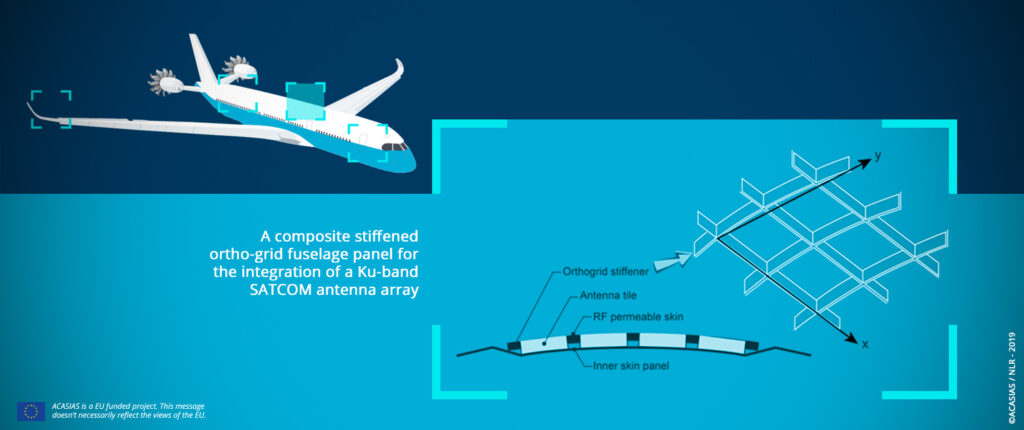
Integration into aircraft
The European ACASIAS project will be reducing the energy consumption of aeroplanes in the future by improving their aerodynamic performance. As part of that, working together with GKN Fokker, NLR will be investigating smarter ways of using parts of the fuselage by adding functions to them, such as building in a beam-forming antenna. NLR already has the requisite knowledge in-house about the structural design and about composite structures in aircraft, aerodynamics and thermomechanics. The knowledge that NLR has about developing cooling systems for satellites will also be used for cooling antenna systems, as well as for analysis and modelling.
| EXAMPLE APPLICATIONS OF THE FREQUENCY BANDS FOR INTEGRATED ANTENNAS | ||
|---|---|---|
| VHF communication : for communication between aircraft and air traffic control | L-band navigation : for satellite navigation via GPS and/or Galileo | Ku-band communication : for passenger entertainment and other logistical information from the airline company or for communication with air traffic control |
Integration into the wing of a drone
“The fuselage of an aircraft is full of antennas,” says Verpoorte, “but the demand for communication and navigation antennas keeps growing because there are more and more – and more extensive – wireless applications. Think of the increasing numbers of people with their own personal communications devices, for instance, or improved navigation, or the Internet of Things, in which devices are connected to a network and can exchange data over that network. Increasing demand means that more antennas are going to be needed on a platform. So investigating how antennas can be combined is interesting because it can provide more space and better coverage, as well as sending and receiving more capacity.”
In the ISABELLE project, antennas are being integrated into a part of the aeroplane that is not traditionally used for antennas: the wing.
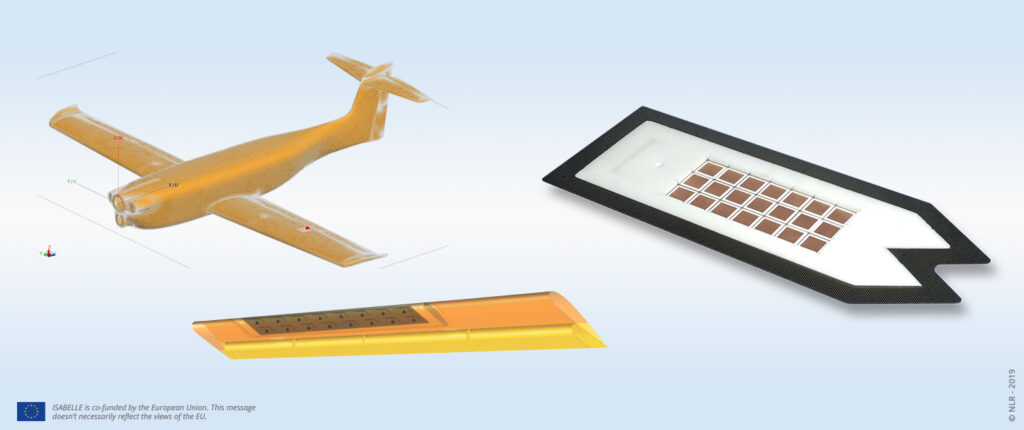
“The challenge here is to make the antenna and beamforming more compact,” says Verpoorte, “so that it takes up less space and is less vulnerable, as well as being more reliable and less pricey.” The integration will be done in a drone with a wingspan of four metres. This project will also provide important insights into autonomous flying, for example for communication between drones and beyond line-of-sight operations, which need communications even when there is no direct visual contact. “There is an increasing need for communication and navigation antennas on planes and satellites. Electronically steerable antennas are better suited for this than mechanically steerable antennas.
Want to know more?
Royal NLR has the experience to design and integrate these antennas into the skin of the aircraft or satellite. NLR also has extensive experience to test this phased array antennas. Visit our website
